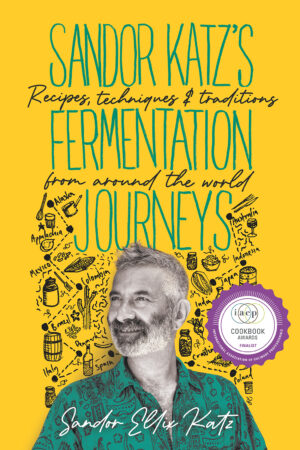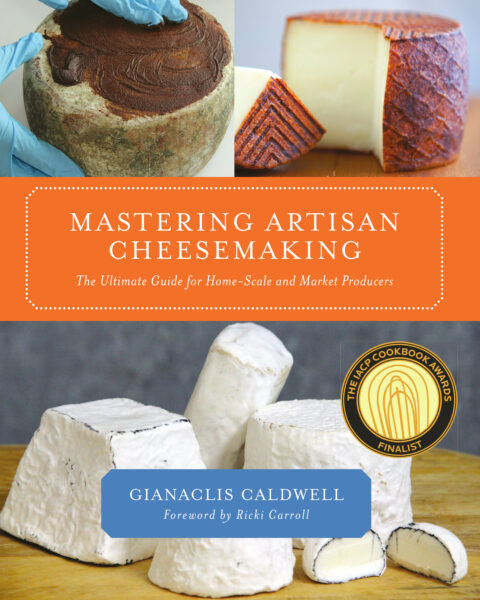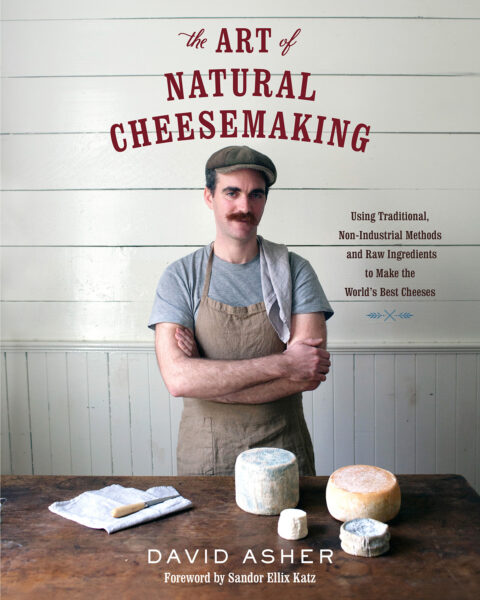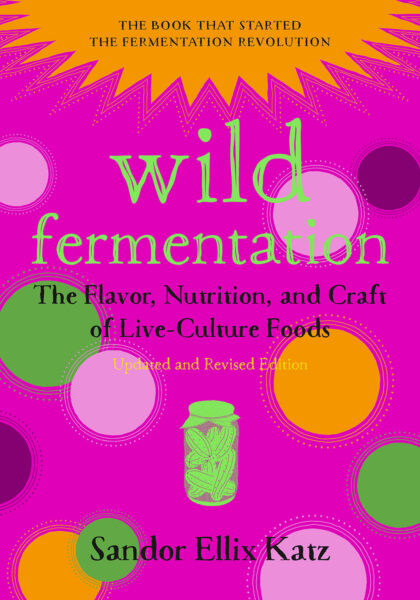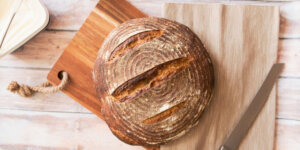Let’s Get Cheesy! Sandor Katz’s Favorite Homemade Cheese
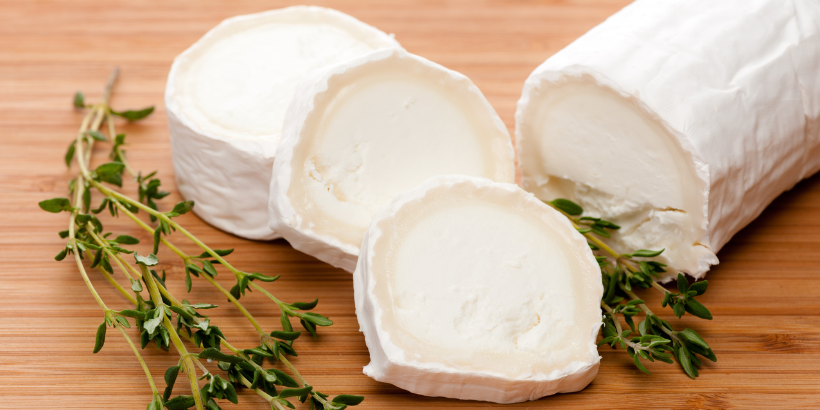
There’s nothing quite like the flavor of fresh, homemade cheese — especially when there’s a story behind it. This cheese recipe, a favorite of fermentation expert Sandor Ellix Katz, requires a few simple ingredients that you can find in your fridge.
The following is an excerpt from Sandor Katz’s Fermentation Journeys by Sandor Ellix Katz. It has been adapted for the web.
Homemade Cheese: Each Cheese Comes With A Story
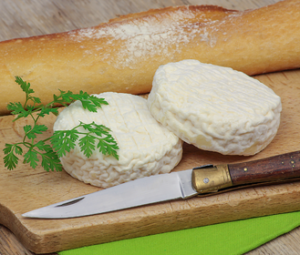 The homemade cheese I’ve been eating most often lately is made by my beloved partner Shoppingspree3d/Daniel, who lives within walking distance down the road, and participates in milking the descendants of the same herd of goats I wrote about in Wild Fermentation.
The homemade cheese I’ve been eating most often lately is made by my beloved partner Shoppingspree3d/Daniel, who lives within walking distance down the road, and participates in milking the descendants of the same herd of goats I wrote about in Wild Fermentation.
He loves those goats dearly, and he talks reverentially about “their alchemy of transforming elements of the forest into rich nourishment.” With a large group of people sharing one kitchen with very limited refrigeration, it is not uncommon for the community to run out of space to refrigerate milk. Sometimes making cheese is the solution to an urgent problem.
Generally, Shoppingspree makes fresh, unaged, acid-curdled cheeses. He was discouraged from aging cheeses because rodents repeatedly got into the cheeses he was trying to age, and he found that fresh cheeses are delicious and easy to make. He has explored different traditional fresh cheeses, such as Indian paneer and Mexican queso fresco, but he’s taken to calling each of his cheeses “a cheese story.”
“People are always asking what kind of cheese it is,” he says. Rather than try to replicate any specific traditional style, he likes to embrace the differences in each batch. “This is the one I accidentally scalded, this is the one I made when we had too much milk; each cheese comes with a story. The story is what the cheese is; perfection has no place in the cheese story, and each cheese is a unique manifestation of the miracle of mammary glands.”
Sandor Katz’s Favorite Homemade Cheese
You can use pasteurized milk from the supermarket for this recipe, but avoid ultrapasteurized, as the high-temperature processing can prevent effective curd formation. Shoppingspree generally starts with raw milk, and he prefers older milk to fresher milk, because it is prefermented.
The older, more acidic milk forms tighter curds and a firmer, more cohesive cheese. For this style of cheese, you can curdle the milk with various acids. Shoppingspree’s favorite curdling agent is sauerkraut juice, followed by lime juice, lemon juice, then vinegar. Often he blends a few of these.
This cheese lends itself to frying. Shoppingspree’s favorite breakfast is a wilted salad he calls a “back-to-the-land breakfast cheese story.” He melts butter, fries small chunks of cheese seasoned with some Special Sauce, then pours the fried cheese and hot butter over fresh garden greens. To complete the circle, he uses the whey from his cheesemaking process to fertilize the greens in the garden.
- Timeframe: 6 hours or longer
- Equipment: Cheesecloth
Ingredients
For roughly 2 pounds of cheese
- 1 gallon/4 liters milk, ideally raw milk that’s already fermenting and starting to taste sour
- About 1/4 cup/60 milliliters sauerkraut juice, lime juice, lemon juice, or vinegar (less if your milk is sour)
- Salt (to taste)
Process
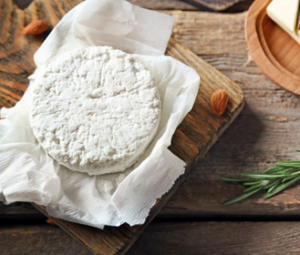 Heat the milk slowly and gently. If you scald the milk, you will taste it, and that will be the most prominent feature of your cheese story. Use moderate heat, and stay with it. “Stir, stir, stir, stir, stir,” advises Shoppingspree.
Heat the milk slowly and gently. If you scald the milk, you will taste it, and that will be the most prominent feature of your cheese story. Use moderate heat, and stay with it. “Stir, stir, stir, stir, stir,” advises Shoppingspree.
He likes to make a vortex in the milk as he stirs, and says, “This is when you sing to the milk and do woo,” adding that “cheese is highly susceptible to woo.”
Bring the milk to a slow boil, then turn off the heat and let the hot milk cool for a few minutes.
Dilute the curdling agent with a couple of tablespoons of water. Add it slowly to the hot milk, as you gently stir. “Every step of this process benefits from slowness,” he emphasizes. Try not to break apart the fragile, cloudlike curd. Add only as much of the acid solution as it takes to curdle the milk.
As soon as the acid reaches sufficient concentration in the hot milk, the curdling will be visible and obvious. More acid than necessary for curdling imparts an acidic flavor, and can give the cheese a gluey texture. Once the milk curdles, it’s fine to leave the curds resting in the whey for a while.
Line a colander with cheesecloth, and gently scoop the curds out of the whey and into the cheesecloth. Try not to break the curds in this process. Add a sprinkle of salt after each scoop.
Gather the corners of the cheesecloth, and hang the cheese over a bowl or pot for the whey to continue to drain. Leave it hanging in a cool spot for at least 6 hours, if possible.
The resulting cheese will have a rounded, irregular shape, which Shoppingspree describes as “brain-like,” and will be firm enough to slice.
Recommended Reads
Recent Articles
Introducing…your new favorite brunch dish! This whole broccoli frittata is packed with fresh, wildcrafted flavors that are bound to help you start your day off on the right foot. The following is an excerpt from The Forager Chef’s Book of Flora by Alan Bergo. It has been adapted for the web. RECIPE: Whole Broccoli Frittata…
Read MoreWondering where to forage for greens this spring? Look no further than hedges, which serve as natural havens for wild greens and herbs! The following is an excerpt from Hedgelands by Christopher Hart. It has been adapted for the web. Food from Hedges: Salads and Greens Let’s start by looking at all the wild foods…
Read MoreThere’s a whole new world out there when it comes to koji. It doesn’t matter if you’re making bread, cheese, or ice cream, koji helps you pump up the flavor! Growing Koji in Your Own Kitchen Koji, the microbe behind the delicious, umami flavors of soy sauce, miso, fermented bean sauce, and so many of…
Read MoreWhether you’re looking to replace your end-of-the-day cocktail, relax before bed, or want something new to add to your tea, this non-alcoholic mocktail syrup base will do the trick. Delicious and all-natural, take a sip of this nightcap mocktail and feel your troubles melt away. The following is an excerpt from Herbal Formularies for Health…
Read MoreWant to enjoy bread without worrying about gluten? With Einkorn bread, a light bread with the lowest glycemic index, you can still enjoy all of the delights of bread. without any of the allergic reactions! The following is an excerpt from Restoring Heritage Grains by Eli Rogosa. It has been adapted for the web. Einkorn…
Read More

